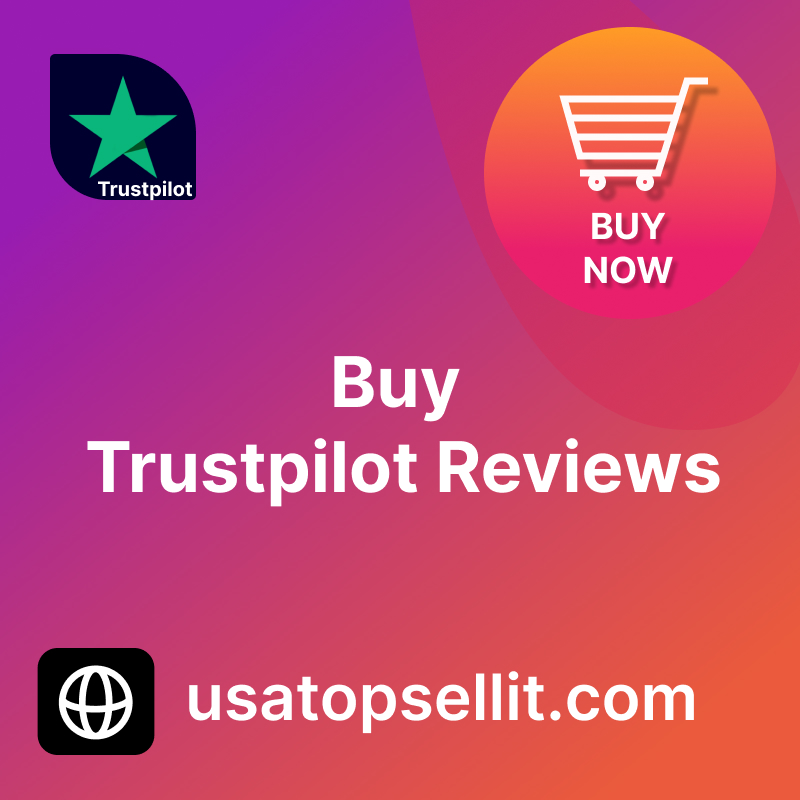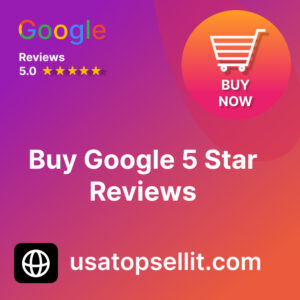Buy Trustpilot Reviews
In today’s hyper-competitive digital marketplace, reputation can make or break a business. Platforms like Trustpilot have emerged as authoritative hubs for consumer trust, with millions of users relying on them to vet companies before making purchasing decisions. With such high stakes, some businesses are tempted to Buy Trustpilot reviews to boost their credibility. But is this tactic smart, legal, or sustainable?
This article explores the strategy of purchasing Trustpilot reviews—why businesses do it, the potential benefits, the serious risks involved, and how to pursue growth ethically.
What is Trustpilot?
Trustpilot is a globally recognized review platform where customers can share their experiences with companies. With over 100 million reviews across hundreds of thousands of businesses, it’s one of the most influential sources of social proof in the world.
Its popularity stems from:
-
High search engine visibility (Trustpilot reviews often appear on the first page of Google)
-
Integration with paid ads and organic listings
-
API support for embedding reviews on websites
-
A trusted platform with moderation tools
Because consumers often trust online reviews more than brand claims, a high Trustpilot rating can be a powerful marketing asset.
Why Do Businesses Buy Trustpilot Reviews?
There are several reasons companies consider buying Trustpilot reviews, including:
1. Boosting Brand Image
A high rating (typically 4.5 stars and above) makes your business look trustworthy at a glance. This positive impression can lead to more clicks, more conversions, and ultimately, more revenue.
2. Jumpstarting a New Business
Startups or newly launched services often struggle with visibility and credibility. Buying reviews may seem like a fast-track strategy to gain initial traction.
3. Outranking Competitors
In sectors like travel, eCommerce, or digital services, a better Trustpilot rating can be a deciding factor for customers comparing similar providers.
4. Repairing Reputation
Businesses recovering from poor customer service episodes or negative press may try to drown out bad reviews with positive ones.
How the Buying Process Works
Most sellers of Trustpilot reviews operate on black- or gray-hat marketplaces, offering packages such as:
-
X number of 5-star reviews per month
-
Reviews from aged accounts
-
Custom content (specific keywords or mentions)
-
Geo-targeted reviews (e.g., U.S., UK, EU)
-
Verified reviewer accounts
Some services claim to use real people to post reviews from distinct IP addresses and devices to mimic authentic behavior. Prices can range from $10 to $50 per review, depending on customization and quality.
The Potential Benefits (Short-Term Gains)
While risky, some businesses do see short-term benefits when they buy Trustpilot reviews:
-
Increased Conversion Rates: Positive reviews reduce purchase hesitation.
-
Better SEO Performance: More reviews and higher ratings can help your Trustpilot profile rank higher on Google.
-
Enhanced Ad Performance: Google and Facebook often pull Trustpilot ratings into ads.
-
Social Proof: A solid review portfolio can establish psychological trust.
However, these gains often come with a catch.
The Risks and Legal Implications
While the idea of buying reviews might seem like an easy shortcut, it’s fraught with ethical, legal, and platform-specific dangers.
1. Trustpilot’s Strict Policy
Trustpilot prohibits fake, incentivized, or paid reviews. If caught:
-
Your reviews may be removed.
-
Your account may be flagged or banned.
-
You may receive a public warning on your profile.
2. Legal Consequences
In many jurisdictions, posting or soliciting fake reviews is illegal. Regulatory bodies like the U.S. Federal Trade Commission (FTC) or UK’s CMA have penalized companies for misleading consumers.
3. Loss of Consumer Trust
If exposed, the damage to your reputation could be worse than having no reviews at all. Consumers are quick to call out fake reviews and may take their business elsewhere.
4. SEO Penalties
If your review profile is deemed manipulated, search engines may downrank your listings or ads may be disapproved.
Real vs. Fake: Spotting the Difference
Both consumers and platforms are getting better at spotting fake reviews. Here’s what typically gives them away:
-
Similar language or tone across multiple reviews
-
New profiles with no review history
-
Overuse of keywords (SEO stuffing)
-
Reviews posted in clusters within short timeframes
-
Profiles with generic names or stock profile pictures
Trustpilot uses automated and manual systems to detect these patterns.
Is There a Legal or Ethical Way to Get More Reviews?
Absolutely. Building a strong Trustpilot profile organically may take time, but it pays off in the long run.
1. Use Trustpilot’s Verified Invitation System
Send review invitations after a purchase via Trustpilot’s tools. These reviews are more likely to be trusted and accepted.
2. Follow Up with Customers
Send friendly reminders via email or SMS asking for reviews. Offering great customer service is still the best way to earn genuine praise.
3. Leverage In-Store or In-App Prompts
Prompt users while they’re actively engaging with your service, such as right after a delivery or successful transaction.
4. Offer a Great Product
At the end of the day, satisfied customers are your best reviewers. Focus on delivering value and they will advocate for you.
What to Look for If You Still Want to Buy Reviews
If you decide to go ahead (despite the risks), here are some ways to mitigate damage:
-
Choose sellers with strong reputations on private forums or marketplaces.
-
Avoid bulk orders; gradual posting appears more natural.
-
Insist on unique, well-written reviews tailored to your brand.
-
Use multiple platforms—don’t rely solely on Trustpilot.
-
Monitor your profile regularly to detect any suspicious activity.
But again, this is not a recommendation—merely information on how the process is often approached.
Alternatives to Buying Reviews
There are several more sustainable strategies to improve your Trustpilot profile:
-
Referral programs: Encourage referrals with review requests tied in.
-
Customer loyalty campaigns: Reward loyal users and ask for feedback.
-
Content marketing: Use blog posts and social media to highlight happy customer stories.
-
Partnerships and influencer marketing: Trusted voices can drive organic reviews.
Final Thoughts: Is Buying Trustpilot Reviews Worth It?
Buying Trustpilot reviews might seem like a quick fix to reputation woes, but it’s a risky gamble. While you might enjoy short-term gains, the long-term consequences—from account bans to legal issues—can far outweigh the benefits.
Instead, focus on authentic growth. Build a brand that naturally earns positive feedback. If you deliver excellent products and customer experiences, real reviews will follow—no shortcuts needed.





Reviews
There are no reviews yet.